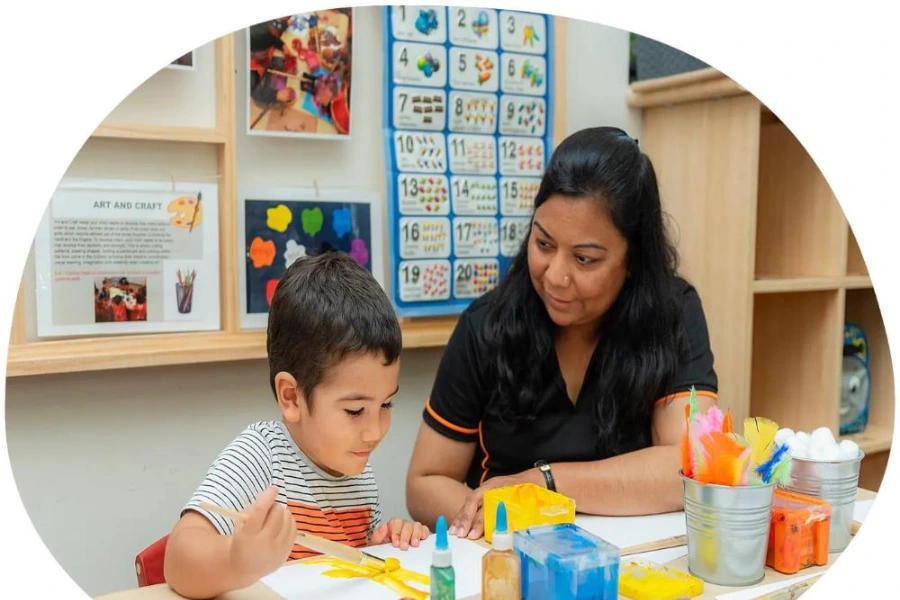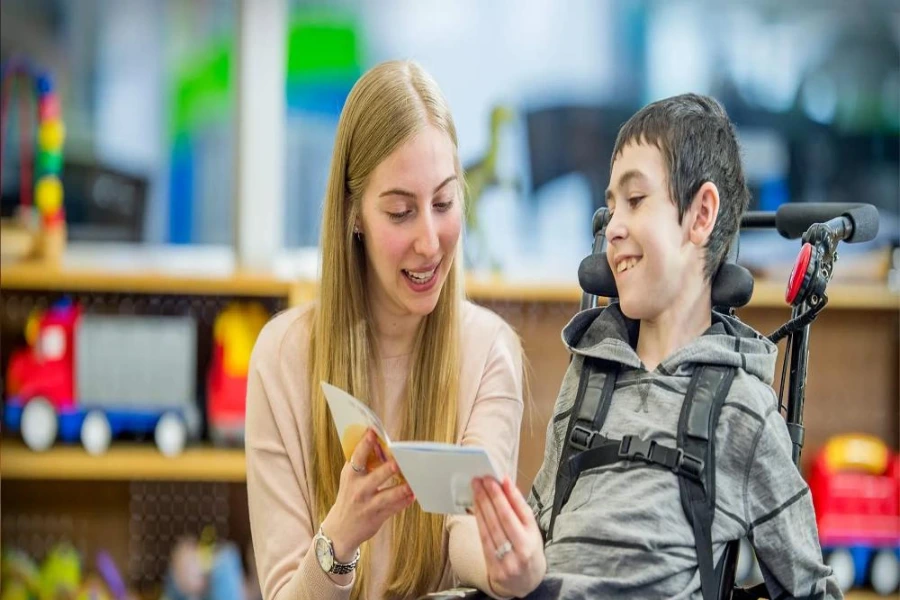
Source: communitykids
Dyslexia may make reading and learning tough, but with the correct help, new opportunities can become them successful. Many teachers and professionals apply Dyslexia Intervention Strategies to personalize educational methods which increase confidence and skill. These strategies help convert difficulties into achievable goals by focusing on individual requirements and using easy, step-by-step methods, providing practical solutions for dyslexic people to improve their reading and understanding.
For more details on the SEN Courses Call/Whatsapp at +919321024137 / +919869866277
To download the brochure of the SEN Courses, Click Here!
How can Teachers Help Students with Dyslexia in the Classroom?
Since Dyslexia is a neurological disorder, the brain’s processing capabilities of visual information are affected. Due to this the child cannot establish any relationship with the words on the board to what they stand for Differentiated instruction and teaching methods that suit the child’s learning preferences and focusing on his key strengths should be implemented in the classroom. Clear communication, helpful exercises, and supportive devices that help readers to improve their abilities and gain confidence are all successful methods.
Some strategies to consider are:
Easily Comprehensible Instructions
The instructions provided to the child should be easily understandable and concise. The instructions should clarify which are the important key points, helping them focus on them.
Explore multi-modal learning techniques
Each child has different key strengths and sensory learning for dyslexic children is usually very strong. So incorporate such sensorial activities through which the children can understand the concepts clearly by stimulating their sensorial skills.
Promote and enhance Phonics Awareness
Stress and emphasize a lot on explaining to the children the phonetics of the words. This helps to foster their reading abilities as decoding becomes easy once the child knows about the phonetic sound of the words.
Schedules and Routine Organisers
Use a lot of attractive visual aids that use different colour coding that helps children to focus well. Designing a visual routine organiser using graphics helps the child to follow his daily schedule and maintain a sense of discipline.
Simplify Information
Break the bigger part of the information into small, understandable steps that help to retain the information needed for bigger tasks.
Rewards and Encouragement
Recognise the smallest achievement of the child by acknowledging him in front of his friends, that boosts his confidence, enabling him to strive harder for attaining his potential.
Promote buddy system
Encourage children to pair up and work together for group activities that ensure them to develop a sense of empathy for their dyslexic friends and they strive to support each other in a regular classroom.
Stop rigid and age-old review methods
Let the child explain what he has understood in the form of a project, presentation, or a chart that helps the teacher assess the child’s understanding of a topic.
Collaborate with Parents and Specialists
Always maintain a clear and open method of communication with parents and specialists to ensure that everyone’s efforts are channeled in the right direction.
The Dyslexia Intervention Strategies are By using these strategies, teachers can create a nurturing classroom atmosphere that helps students with dyslexia develop stronger reading and learning skills.

Source: hearingreview
What not to do For Students with Dyslexia?
To avoid unplanned difficulties, it is necessary to use effective methods while supporting dyslexic students. For example, students with dyslexia usually succeed if given a supportive and patient environment.
Here are some important practices to avoid:
Shaming or Embarrassment
Do not publicly point out spelling or reading mistakes or force a student to read aloud if they feel uneasy.
Unrealistic Expectations
Avoid expecting work to be completed at the same pace as others; some learners need extra time to process information.
Overemphasis on Written Work
Relying solely on written assessments can put unnecessary pressure on learners. Allowing children to make oral presentations or project based presentations can help the child showcase what he or she has understood clearly.
Refrain from making comparisons
Stop comparing your child to others and their progress, as it directly affects their morale, making them feel more frustrated and discourages.
“Just Try Harder”
Such phrases can undermine confidence by ignoring the neurological challenges involved.
Avoiding these difficulties helps to build a positive learning environment that meets individual needs, especially for Students with Dyslexia. When teachers concentrate on Dyslexia Intervention Strategies, understanding and adapting their method, Students with Dyslexia can succeed academically.
For more details on the SEN Courses Call/Whatsapp at +919321024137 / +919869866277
To download the brochure of the SEN Courses, Click Here!

Source: mrbusinessmagazine
What Tool can Help Dyslexic Students in the Classroom?
As processing visual information is an issue with dyslexic students, they use techniques or software that give more emphasis to spoken language such as text to speech software. When information is offered through speech it helps the child to understand and comprehend better.
Key benefits include:
Improved Accessibility
It helps children to listen to textbooks, materials, and digital tools, making the learning process more enjoyable.
Support for Different Learning Styles
Audio review complements visual learning, helping students process information in various ways.
Improved Focus and Retention
By hearing the material, students can better follow along and recollect key concepts.
Customization Options
Many programs let users modify reading speed, voice type, and highlighting options to match individual needs.
Using text-to-speech software can form a more Inclusive Classroom atmosphere where every dyslexic student has the same opportunity to succeed.
What Improves Dyslexia?
Improving Dyslexia Needs a careful mixture of structured training, supportive techniques, and correct technology to help students build crucial reading and understanding skills. A modified method based on proven research can lead to great improvements in decoding and overall education.
Here are some effective Dyslexia Intervention Strategies from Special Education Needs Course:
Structured Literacy Programs
By focusing on clear, logical instruction in phonics and language patterns to help students understand the ground rules of reading step by step.
Specific Sensorial Instruction
Try to observe and find out the key sensorial skills of the child and accordingly provide them instructions in a multi-modal format, making use of visual, hands-on learning methods that ensure the attainment of learning outcomes.
Graphic Aids and latest advanced Software
Incorporate methods that use text to speech and attractive visual aids that help the concepts to seep in better making it easy for students to understand and process information.
Individualized Learning Plans
Structured lessons to address the unique needs of every student, to provide direct support for parts that require extra care.
Supportive Classroom Environment
Nurture a positive and encouraging environment that builds confidence and reduces stress, allowing students to concentrate on learning without fear of results.
Teachers looking to improve their skills can advance respected visions and practical methods through specialized training. Vidhyanidhi Education Society (Govt. Regd.) offers a Special Education Needs Course designed to prepare teachers with methods that support students with dyslexia efficiently.
Boost your expertise with Vidhyanidhi Education Society’s SEN Course! Enroll now and transform lives!
For more details on the SEN Courses Call/Whatsapp at +919321024137 / +919869866277
To download the brochure of the SEN Courses, Click Here!
FAQs
Can Dyslexia be improved?
Yes, targeted, multisensory instruction and consistent support can significantly improve dyslexia, strengthening reading and processing skills.
What Program is best for Dyslexia?
Organized learning programs using clear phonics, multisensory methods, and individual plans are highly effective for dyslexia.
Are People with Dyslexia Successful?
Yes, many people with dyslexia succeed by using their unique powers in creativity and problem solving.



